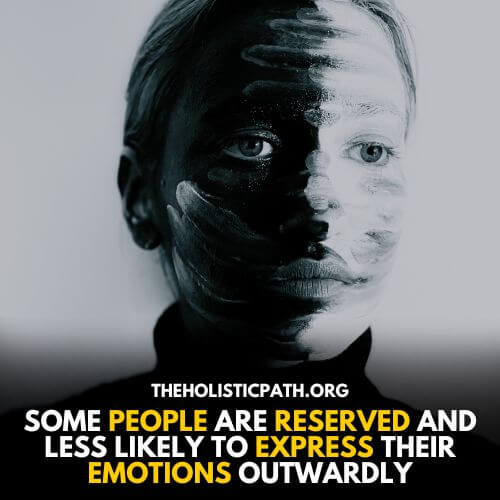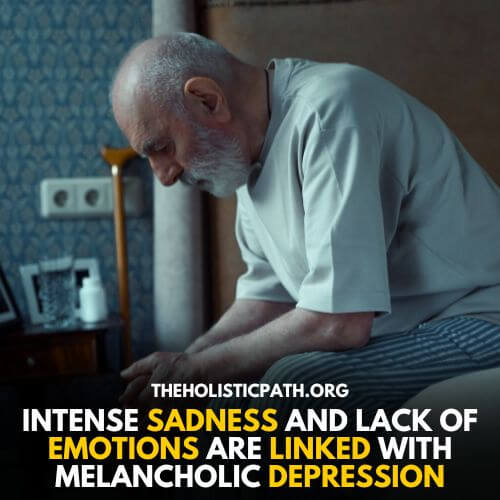Though it is a common misconception that crying is always an indication of depression, the truth is that not all people with depression cry. In fact, many individuals experiencing depression do not outwardly express their emotions through tears. That being said, this does not mean they are not dealing with mental health issues or are any less depressed than someone who does cry.
Just because an individual is not crying, it does not necessarily mean they are not depressed. Other signs of depression include changes in appetite, difficulty sleeping, loss of energy or motivation, and isolating themselves from other people and activities they once enjoyed.
More signs are difficulty focusing on tasks at work or school, feelings of hopelessness or worthlessness, and thoughts of suicide. So, this article examines the query ‘is not crying a sign of depression’ and reflects both sides of the picture.
Is Not Crying a Bad Thing?
The simple answer is no – not crying is not necessarily a bad thing. In fact, some people are naturally more reserved and less likely to express emotions outwardly. Others may be going through difficult times and feel that crying would only make the situation worse or feel too vulnerable. They may choose instead to keep their feelings inside, suppressing any urge to cry.
It is important to recognize that not crying may be a sign of strength and courage, rather than a sign of depression. For example, someone who has experienced a great loss but chooses to keep their emotions in check, so as not to overwhelm themselves or others around them, could be exhibiting an admirable level of resilience. The same can be said of a person who is in the midst of a difficult challenge but chooses to stay strong and determined, rather than breaking down in tears.
Ultimately, there is no right or wrong way to express emotions, and it is important to remember that not crying does not necessarily equate to depression. Everyone processes situations differently; what matters is that individuals find the right outlet for their emotions and take care of themselves. If you or someone you know is struggling, it is important to seek professional help.

6 Major Physical Benefits of Crying
Crying is often seen as a sign of weakness or vulnerability. However, there are several physical and mental benefits associated with expressing emotions through tears. Here are a few:
- Flush Out Harmful Emotions: Crying can help to flush out any negative or harmful emotions that have been built up, allowing us to let go of our stress and worries.
- Eliminate Waste Products: Tears contain toxins such as manganese and sodium, which can be flushed out when we cry.
- Boost Immunity: Crying releases immunoglobulin A, an antibody that helps the body fight off infections.
- Tears Lubricate Eyes: Crying helps to moisten and lubricate the eyes, preventing dryness and discomfort.
- Stress Relief: Crying can help to reduce stress levels by lowering levels of cortisol (the stress hormone) in the body.
- Energy Release: Crying is a natural release of energy, which can help to reduce feelings of tension or anxiety.
- Reduced Blood Pressure: Studies have shown that crying can lead to lower blood pressure, reducing the risk of heart disease and stroke.
- Improved Breathing: Crying helps to regulate breathing, which in turn can help to reduce stress levels.
7 Major Mental Benefits of Crying
In addition to the physical benefits, crying can also have a positive impact on our mental health. Crying is an important part of processing and expressing emotions, which can be beneficial in terms of reducing stress levels, and improving mood and overall well-being. Here are some of the mental benefits associated with crying:
- Emotional Catharsis: Crying can help to release pent-up emotions and facilitate the healing process.
- Self-Affirmation: Shedding tears is a powerful form of self-expression and can result in feelings of empowerment and strength.
- Improved Mood: Crying can be a way of expressing and validating emotions, which can lead to improved mood.
- Problem-Solving: Crying makes us able to clear the mind and allows us to think more clearly, helping us to find solutions to problems.
- Increased Clarity: Crying can assist to focus our thoughts, enabling us to gain clarity on how we are feeling and what we want.
- Positive Reflection: Crying can also provide assistance to us to reflect on our feelings and experiences in a constructive way.
- Seek Support: Crying is an effective way of seeking support from friends, family, or professionals.
2 Main Medical Reasons For the Inability to Cry
The inability to cry can be caused by a number of medical reasons. These include psychological disorders such as depression, anxiety and PTSD; physical ailments such as neurological diseases or trauma; and medications that suppress emotions. Here are some of the common medical reasons for not being able to cry:
1. Keratoconjunctivitis sicca
Keratoconjunctivitis sicca (KCS) is a condition that can cause individuals to be unable to produce tears, resulting in an inability to cry. KCS is caused by a decrease in tear production due to an autoimmune disorder or other underlying medical condition. Below are some of the physical symptoms associated with KCS:
- Burning sensation in the eyes
- Redness or irritation of the eyes
- Gritty feeling in the eyes
- Itching and dryness of the eyelids
- Discharge from the eyes that is either thick or thin, watery, mucoid, purulent (containing pus) or bloody
- Difficulty with vision
- Eye fatigue or pain
- Increased sensitivity to light
- Loss of eyelashes, eyebrows, or facial hair.
2. Sjögren’s Syndrome
Sjögren’s syndrome is a chronic autoimmune disorder that can cause an inability to produce tears, resulting in an inability to cry. It is most commonly found among women aged 40 and over, but it can occur in men as well. Below are some of the physical symptoms associated with Sjögren’s syndrome:
- Dry mouth
- Swelling and pain in the salivary glands
- Fatigue or malaise
- Joint pain, stiffness and swelling
- Skin dryness or rash
- Burning sensations in the eyes, mouth or throat.
3 Main Mental Reasons For the Inability to Cry
The inability to cry can also be caused by mental reasons, such as psychological disorders or trauma. People with depression may not feel the urge to cry, even when faced with a situation that would normally elicit strong emotions. Other individuals may have difficulty expressing emotions due to a traumatic experience or an emotional blockage.
Here are some of the common mental reasons for not being able to cry:
1. Melancholic Depression
Melancholic depression is a type of depression that can cause an individual to feel unable to cry. This is due to the intense sadness and lack of emotions associated with melancholic depression. Below are some of the physical, cognitive, and emotional symptoms of melancholic depression:
- Loss of appetite
- Weight loss or gain
- Isolation from friends and family
- Lack of interest in activities that were once pleasurable
- Difficulty concentrating or making decisions
- Long periods of feeling hopeless, helpless, or worthless
- Feelings of guilt or shame
- Changes in sleeping patterns.
2. Anhedonia
Anhedonia is a condition in which an individual experiences a decreased ability to feel pleasure. It can be caused by a variety of psychological and physical disorders including depression, schizophrenia, bipolar disorder, and substance abuse. People with anhedonia often experience an inability to cry as part of this condition. Below are some of the physical, cognitive, and emotional symptoms of anhedonia:
- Loss of appetite or weight loss
- Isolation from friends and family
- Apathy and lack of motivation
- Lack of interest in activities that were once pleasurable
- Difficulty concentrating or making decisions
- Inability to feel pleasure from everyday activities.
3. Repressed Emotions
Quite often people are unable to cry due to repressed emotions. This can happen when an individual experiences a traumatic event and chooses to repress their feelings in order to cope with the situation. This can cause an inability to cry even during times that would typically elicit tears, such as funeral services or heart-wrenching movies. Below are some of the physical, cognitive, and emotional symptoms of repressed emotions:
- Isolation from friends and family
- Difficulty expressing feelings or talking about experiences
- Changes in sleeping patterns
- Loss of interest in activities that were once pleasurable
- Feeling overwhelmed or anxious when faced with difficult situations
- Avoidance of activities or situations that may trigger memories
- Feelings of guilt, shame, or worthlessness.

Social and Personal Reasons For the Inability to Cry
While depression, anhedonia, and repressed emotions can all cause an inability to cry, there are a variety of other potential causes. In some cases, physiological or medical conditions can be to blame. Additionally, certain medications or even dehydration can cause an inability to cry. Below are some of the other common causes of the inability to cry:
Societal Pressures
Sometimes people are unable to cry due to societal pressures. This can happen when an individual feels like they should not be seen as weak or vulnerable and tries to maintain a “tough” exterior. Below are some of the effects of societal pressures on an individual’s ability to cry:
- Feelings of embarrassment or shame if they start to cry in public
- Fear of being judged by others if they start to cry
- Difficulty expressing their true feelings in front of other people
- Isolation from friends and family
- Avoidance of situations that may trigger emotions.
Personal Beliefs
At times people lack the ability to cry due to personal beliefs. This can happen when an individual does not believe that crying is a healthy emotional outlet or when they feel like their emotions should be kept private. Below are some of the effects of personal beliefs on an individual’s ability to cry:
- Difficulty expressing feelings or talking about experiences
- Refusal to seek help from mental health professionals
- The belief that crying is a sign of weakness or vulnerability
- Fear of being judged by others if they start to cry.
6 Effective Tips To Cry to Gain Mental Stability
If you are having difficulty crying due to any of the causes mentioned above, there are a few things that may help. Crying can be an effective way to release emotional pain and gain emotional stability, so learning how to cry is important for emotional well-being. Below are some tips on how to cry:
1. Identify Your Emotions
If you are struggling to cry, it is important to take the time to identify and explore your emotions. Here are some tips for doing this:
- Take a moment to observe what emotions you may be experiencing at the moment
- Talk to yourself in positive and calming language
- Take deep breaths and focus on the physical sensations in your body
- Make a list of any feelings or thoughts that come to mind.
2. Take to Time to React to your Emotions
Once you have identified your emotions, it is important to take the time to react to them. Here are some tips for doing this:
- Allow yourself to experience your emotions without judgement and self-criticism
- Make sure that you are in a safe space free of distractions
- Let go of all expectations about how you should react or what your reaction “should” look like
- If you feel overwhelmed, take a break and practice deep breathing exercises.
3. Reframe Your Thinking
If you find that you are unable to cry, it can be helpful to reframe your thinking. Here are some tips for doing this:
- Recognize that emotions are natural and necessary
- Acknowledge your feelings and give yourself permission to feel them
- Remind yourself that being sad or overwhelmed is not a sign of weakness
- Try to focus on the positive aspects of your situation and look for sources of hope.
4. Express Your Emotions
Once you have validated your emotions, it is important to express them in a healthy way. Here are some tips for doing this:
- Talk with someone you trust or seek professional help if needed
- Find creative outlets to release your emotions such as art, music, writing, or movement
- Spend time in nature and let yourself be surrounded by beauty
- Practice mindfulness activities to bring your attention and awareness back to the present moment.
5. Talk to Close Ones
If you are struggling to cry, it can be helpful to talk with close family or friends. Here are some tips for doing this:
- Reach out to someone you trust and let them know how you’re feeling
- Ask for help if needed and don’t hesitate to accept it
- Talk about your feelings and share what you’re going through
- Let your loved ones know that it is okay if they don’t have the right words, just being there is enough.
6. Seek Professional Help
If you are still unable to express yourself or if your feelings seem overwhelming, it may be beneficial to seek professional help. Here are some tips for doing this:
- Talk to a mental health professional who is experienced in dealing with emotional issues.
- Ask your family doctor or primary care physician for advice and referrals.
- Contact a local counselling centre or support group if needed.
- Consider alternative therapies such as meditation, art therapy, or mindfulness-based cognitive therapy.

Conclusion
Is Not Crying a Sign of Depression? No, not necessarily. While an inability to cry may be a symptom of societal pressures or emotional distress, it is important to remember that everyone experiences and expresses emotions differently.
Taking care of your mental health can help you gain emotional stability and find healthy outlets for your emotions. Reach out for support whenever you need it and don’t hesitate to accept help. It is okay to take the time you need to process and cope with your emotions.
Frequently Asked Questions
What does it mean when you can’t cry?
When you cannot cry, it can indicate emotional distress. An inability to cry can be caused by a range of factors including societal pressures, fear of vulnerability, or suppressed emotions. Taking care of your mental health and seeking professional help when needed can help you gain emotional stability.
Should I be worried if I don’t cry?
No, not necessarily. Everyone experiences and expresses emotions differently. It is important to remember that expressing your emotions in a healthy way can help you gain emotional stability.
Taking time for self-care can also help you cope with difficult emotions in a healthy way. If you are still struggling to express yourself or if your feelings seem overwhelming, it may be beneficial to seek professional help.
Is it healthy for a person not to cry?
Yes, it can be healthy for a person not to cry. It is important to remember that everyone expresses emotions differently.
Taking care of your mental health and talking to close ones can help you gain emotional stability and find healthy outlets for your emotions. Don’t hesitate to accept help if needed, and take the time you need to process and cope with your emotions.
What is the emotional blockage?
The emotional blockage is when feelings become “blocked” or suppressed due to emotional distress. This can lead to an inability to cry, a lack of emotional expression, and difficulty in communicating your emotions.
It is important to remember that talking to close ones and seeking professional help when needed can provide valuable support. A trained therapist or counsellor can help you develop strategies for coping with difficult emotions and work with you to develop a plan of action.
How do I force myself to cry?
1. Allow yourself to feel your emotions
2. Talk about your feelings with someone who understands
3. Write down your thoughts and feelings
4. Take deep breaths
5. Revisit happy memories
How to cry without sound?
1. Take slow, deep breaths.
2. Allow yourself to feel your emotions.
3. Close your eyes and picture a sad moment or emotional experience.
4. Write down your thoughts and feelings in a journal.
5. Isolate yourself from music or nature sounds.
6. Put pressure on your tear ducts.
7. Give yourself permission to express your emotions in whatever way feels most natural.
8. Practice mindfulness activities like meditation or yoga.
9. Seek professional help if needed.
Can you cry without tears?
Yes, it is possible to cry without tears. Physical reactions such as crying are often a result of emotional distress or turmoil. Isolating yourself and allowing yourself to feel your emotions can help you express them in different ways.
Finding healthy outlets for your emotions and talking to someone who understands can provide valuable support. Additionally, it may be beneficial to seek professional help if needed.
Which hormone is responsible for crying?
The hormone responsible for crying is oxytocin. Oxytocin is released during times of emotional distress or turmoil, and it helps to induce the physical act of crying. It also plays a role in other bodily functions such as sexual arousal and childbirth. Taking time for self-care can help you cope with difficult emotions in a healthy way.
References:
Jonathan Rottenberg ( 2008). Do mood disorders alter crying? A pilot investigation. https://pubmed.ncbi.nlm.nih.gov/17437260/
Asmir Gračanin (May 28, 2014). Is crying a self-soothing behavior? https://www.ncbi.nlm.nih.gov/pmc/articles/PMC4035568/
